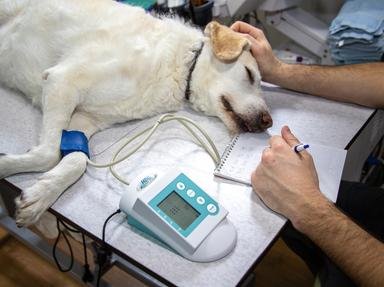Quiz Answer Key and Fun Facts
1. What organs are primarily infected by canine parvovirus (CPV)?
2. Sometimes vaccinations given to puppies against parvo are ineffective. What makes early vaccinations useless for a short period of time?
3. The word 'parvo' comes from which of the following roots?
4. By which of the following can CPV be spread?
5. The virus ____________ hot, cold, humid, and dry environments.
6. What kind of dogs are at an increased risk of getting infected by CPV?
7. CPV infection causes which of the following symptoms?
8. An examination of what is needed to confirm CPV diagnosis?
9. Any CPV strain can infect humans, pigs, and birds.
10. What is unique about CPV-2b (strain FP84)?
11. Which of the following is NOT a treatment for a dog infected with CPV?
12. Black and tan breeds such as the Doberman and Rottweiler may be more susceptible to CPV infections.
13. Which of the following would be a good way to prevent a CPV infection?
14. Which is a good agent to help disinfect objects that might have CPV?
15. Even if an owner has had his/her dog vaccinated properly, a small percentage of dogs may not develop the protection they need to fight an infection.
Source: Author
Jr_Dog_expert
This quiz was reviewed by FunTrivia editor
crisw before going online.
Any errors found in FunTrivia content are routinely corrected through our feedback system.

